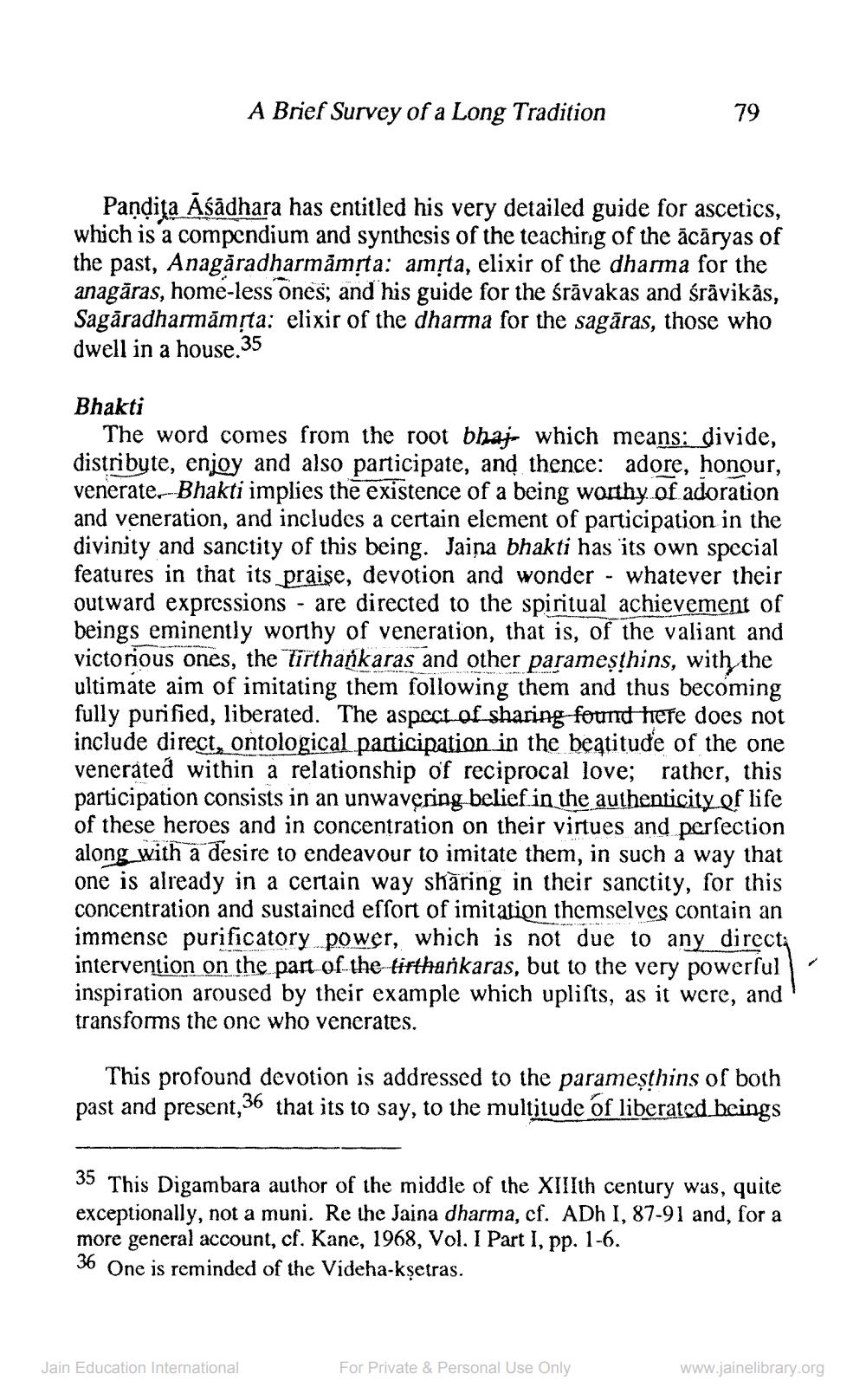________________
A Brief Survey of a Long Tradition
Pandita Āśādhara has entitled his very detailed guide for ascetics, which is a compendium and synthesis of the teaching of the ācāryas of the past, Anagaradharmāmṛta: amṛta, elixir of the dharma for the anagāras, home-less ones; and his guide for the śrāvakas and śrāvikās, Sagāradharmāmṛta: elixir of the dharma for the sagaras, those who dwell in a house.35
Bhakti
The word comes from the root bhaj- which means: divide, distribute, enjoy and also participate, and thence: adore, honour, venerate. Bhakti implies the existence of a being worthy of adoration and veneration, and includes a certain element of participation in the divinity and sanctity of this being. Jaina bhakti has its own special features in that its praise, devotion and wonder whatever their outward expressions - are directed to the spiritual achievement of beings eminently worthy of veneration, that is, of the valiant and victorious ones, the tirthankaras and other parameṣthins, with the ultimate aim of imitating them following them and thus becoming fully purified, liberated. The aspect of sharing found here does not include direct, ontological participation in the beatitude of the one venerated within a relationship of reciprocal love; rather, this participation consists in an unwavering belief in the authenticity of life of these heroes and in concentration on their virtues and perfection along with a desire to endeavour to imitate them, in such a way that one is already in a certain way sharing in their sanctity, for this concentration and sustained effort of imitation themselves contain an immense purificatory power, which is not due to any direct intervention on the part of the tirthankaras, but to the very powerful inspiration aroused by their example which uplifts, as it were, and transforms the one who venerates.
79
Jain Education International
-
This profound devotion is addressed to the parameşthins of both past and present,36 that its to say, to the multitude of liberated beings
35 This Digambara author of the middle of the XIIIth century was, quite exceptionally, not a muni. Re the Jaina dharma, cf. ADh I, 87-91 and, for a more general account, cf. Kane, 1968, Vol. I Part I, pp. 1-6. 36 One is reminded of the Videha-kṣetras.
For Private & Personal Use Only
www.jainelibrary.org




